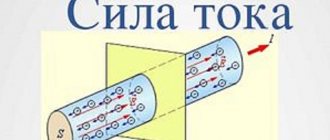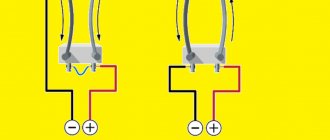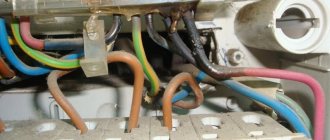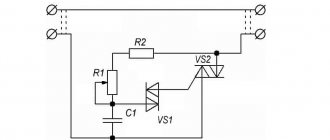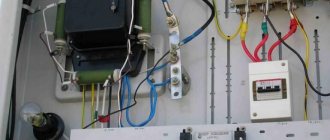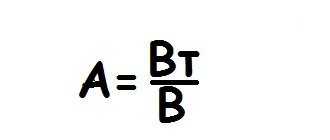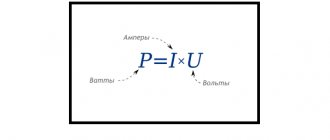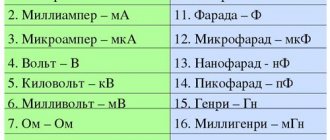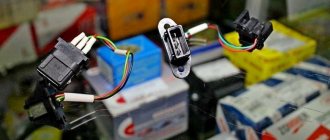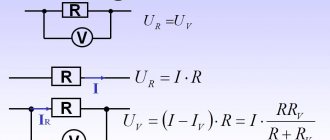How to convert milliamps to amps and vice versa
When converting values from one quantity to another, you must be able to work with powers and standard form of numbers in physics. It will be easier to translate if you know the correspondence between degrees and prefixes. It is recommended to master it.
To convert milliamps to amps, divide the available numeric value by 1000, or multiply by 10^-3 when working with a standard display. And to convert back, you must either multiply by 1000 or multiply the value by 10^3.
Example: How many amps are in 500 milliamps?
A milliamp is 1000 times smaller than an amp, so divide it by 1000; 500/1000 = 0.5. It turns out 0.5 A.
Converter
1 µA = 10^-6 A = 0.0000001 A. One microamp is less than one amp per million times. To convert the first value to the second, you will need to divide by 1,000,000 or multiply by 10^-6 A.
To convert microamps to milliamps, you need to consider that 1 mA = 1000 µA. The first algorithm will use the same steps in milliamps and amps to convert the values.
Electricity is a broad topic in physics; to understand it, you need to understand many processes and, most importantly, the basic unit that characterizes it - the ampere. And to correctly translate values, you need to know the accepted prefixes in SI and mathematics.
How to correctly measure electric current in amperes
It should be clarified that current measurement is a measurement of its basic characteristics (force and voltage). Most often, in laboratory or school settings, the current strength is measured on a conductor or in the entire electrical circuit. For this, a special device is used - an ammeter. Which in the diagrams is correctly indicated by a circle with the Latin letter “A” inside.
When connecting an ammeter, the following rules must be observed:
- Connect to the electrical circuit only in series with the section of the circuit where you want to measure the current. In other words, before or after the section of the circuit for measurements.
- Be sure to pay attention to the “signs” of current in the circuit. We connect the plus wire from the power supply to the plus of the ammeter, and the minus to the minus.
- Try not to exceed the value on the measurement scale, because in this case the device may not work. If the ammeter has two scales, use the one with the highest limit.
Diagram of the correct connection of an ammeter to an electrical circuit When measuring resistance, it is recommended to take into account the internal resistance of the ammeter itself, which is indicated on it.
But they are neglected at school. Additional Information! For measurements, you can use a multimeter - a device that combines the functions of measuring force, power and other current parameters. For this, the same rules for including an ammeter in the circuit are used.
Measurement technique
As noted earlier, ammeters, multimeters and testers are used to measure current. The first of them provides the greatest measurement accuracy. They only measure one size and one scale. And it's not very convenient. In turn, multimeters and testers allow you to measure almost all electrical quantities, and not just in a certain range. In addition, these devices have the ability to change units of measurement. For example, the device indicates that the interval has been exceeded. In this case, it is necessary to convert milliamps to amperes and thereby find out the desired value. The main disadvantage of testers and multimeters is that their error, unlike ammeters, is much greater. However, in practice they are often used, as this makes it easy and simple to find the fault and fix it. Another important nuance associated with these devices: if previously it was necessary to break the circuit, now there are testers and multimeters that allow you to measure current strength in a non-contact way, that is, without connecting. This solution is increasingly being used in practice.
Physical quantity
Ampere is a unit of measurement of current. Its value can be determined by making direct measurements with a multimeter, tester or ammeter (direct method). Current strength is measured only when the measuring device is connected in series to an electrical circuit. In the second case, its value can be found out by calculations (indirect method). If you know the voltage applied to a section of circuit and also its resistance, simply divide the former by the latter and we will get the required value. In practice, amplifiers are used infrequently - this makes a big difference. Therefore, it is necessary to use more units: micro (10-6) and milli (10-3). But to perform electrical calculations, you must convert them to base units (such as milliamps to amps). Consider the following example. The voltage on the circuit section is U = 6 V, resistance R = 100 Ohm. The current force I acting on it is determined by Ohm’s law:
I = U / R, (1)
where is it:
- U – voltage on the circuit section, V;
- R – resistance of the same section, Ohm;
- I is the current force acting on it, A.
As a result of calculations, we obtain I = U / R = 6/100 = 0.06 A. This is not a very convenient number to understand. Therefore, it is converted into several units of measurement. In this case, it is convenient to express this value in milliamps. To do this, multiply the resulting value of 0.06 A by 1000 and get 60 mA. You can also do the reverse conversion - from milliamps to amps. To do this, it is enough to divide 60 mA by 1000 and we will get the same 0.06 A. From this conversion we can see how many milliamps are in amperes - 1000. Therefore, we divide or multiply by this number. If the prefix "micro" is used to change from one unit of measurement to another, multiply or divide by 1,000,000.
Measurement technique
As noted earlier, ammeters, multimeters and testers are used to measure current. The first of them provides the greatest measurement accuracy. They only measure one size and one scale. And it's not very convenient. In turn, multimeters and testers allow you to measure almost all electrical quantities, and not just in a certain range. In addition, these devices have the ability to change units of measurement. For example, the device indicates that the interval has been exceeded. In this case, it is necessary to convert milliamps to amperes and thereby find out the desired value. The main disadvantage of testers and multimeters is that their error, unlike ammeters, is much greater. However, in practice they are often used, as this makes it easy and simple to find the fault and fix it. Another important nuance associated with these devices: if previously it was necessary to break the circuit, now there are testers and multimeters that allow you to measure current strength in a non-contact way, that is, without connecting. This solution is increasingly being used in practice.
What are amps, milliamps and microamps?
Correct designations: ampere - A, milliampere - mA, microampere - µA.
This physical quantity is named after the scientist's last name, so his entry will always contain a capital letter A in the Russian designation and a capital Latin letter A in the international designation.
Note! Do not confuse MA and MA, especially when solving problems. In the first case, the megaampere is indicated (10 ^ 6 A), and in the second case, the milliampere (10 ^ -3 A), which is a billion times less than a megaampere.
The writing of fractions and multiples of units, including milliamps and microamps, will be done in accordance with the rules for writing units and prefixes established by the above-mentioned International System of Measurement (SI).
- The prefix is written along with the name or designation of the unit.
- It is unacceptable to use two or more prefixes in a row (for example, micromilliampere).
- In most cases, it is customary to choose a prefix so that it is preceded by a number from 0.1 to 1000.
Additional Information! The prefix milli is translated from Latin (thousand) as “thousand”. The prefix “micro” has ancient Greek roots (μικρός) and is translated as “small”.
How many watts are in 1 ampere?
The concept of voltage is also important when determining the power of a circuit. This is the electromotive force that moves electrons. Measured in volts. Most devices have this feature in their documentation.
To determine the power at a current of one ampere, you need to know the mains voltage. So, for a 220 volt outlet it will be: P = 1 * 220 = 220 W. Formula for calculation: P = I * U, where I is current and U is voltage. In a three-phase network, it is necessary to take into account a correction factor, which reflects the percentage of operating efficiency. In most cases it is between 0.67 and 0.95.
How to correctly measure electric current in amperes
It should be clarified that current measurement is a measurement of its basic characteristics (force and voltage). Most often, in laboratory or school settings, the current strength is measured on a conductor or in the entire electrical circuit. For this, a special device is used - an ammeter. Which in the diagrams is correctly indicated by a circle with the Latin letter “A” inside.
When connecting an ammeter, the following rules must be observed:
- Connect to the electrical circuit only in series with the section of the circuit where you want to measure the current. In other words, before or after the section of the circuit for measurements.
- Be sure to pay attention to the “signs” of current in the circuit. We connect the plus wire from the power supply to the plus of the ammeter, and the minus to the minus.
- Try not to exceed the value on the measurement scale, because in this case the device may not work. If the ammeter has two scales, use the one with the highest limit.
Diagram of the correct connection of an ammeter to an electrical circuit
When measuring resistance, it is recommended to take into account the internal resistance of the ammeter itself, which is indicated on it. But they are neglected at school.
Additional Information! For measurements, you can use a multimeter - a device that combines the functions of measuring force, power and other current parameters. For this, the same rules for including an ammeter in the circuit are used.
Which brand of machine is better?
Rating of the best manufacturers of automatic circuit breakers
| Name | Rating | |
| #1 | ABB | ⭐ 4.95 / 5 64 — votes |
| #2 | Legrand | ⭐ 4.9 / 5 27 — votes |
| #3 | Schneider Electric | ⭐ 4.85 / 5 41 — voice |
| #4 | General Electric | ⭐ 4.8 / 5 3 — votes |
Interesting materials:
How to disconnect the hoses from the water filter? How to wash beige tulle? How to wash grayed tulle? How to remove dust from curtains? How to wash yellow curtains? How to remove fresh asphalt from shoes? How to stop a cat from going to the toilet anywhere? How to stop a dog from barking at night? How to stop a dog from barking near the door? How to keep neighbors' cats away from your property?
What is measured in amperes
The main physical quantity measured in amperes is current (denoted in formulas by the letter “I”). As mentioned earlier in the definition of ampere, it is equal to the ratio of the amount of charge passing through a conductor in a certain time and the transit time itself.
Magnetomotive force (a physical quantity, the modulus of which shows the ability to create magnetic fluxes using electric currents) and magnetic potential difference (a scalar quantity that characterizes the energy characteristics of the electrostatic field at a given point) are also measured in amperes... Often in practice you can find the use of the term “ampere” -turn" to indicate these values. But officially this is considered outdated terminology.
